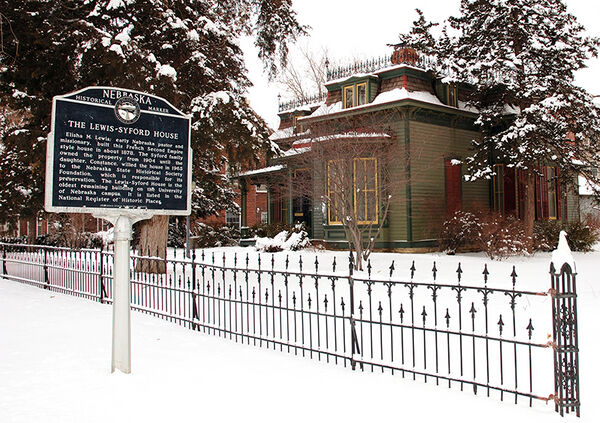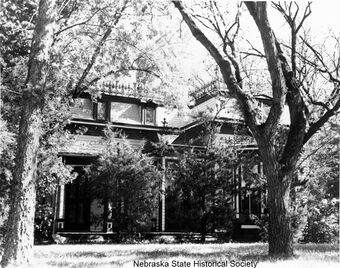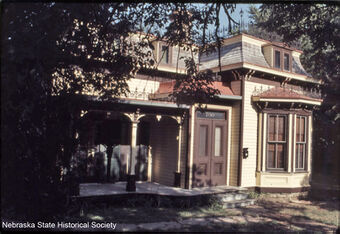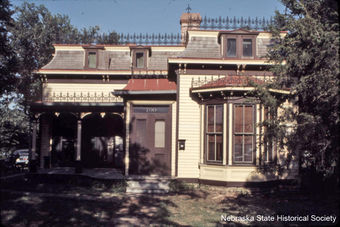Nebraska Historical Marker: The Lewis-Syford House
Location
700 N 16th St, University of Nebraska-Lincoln, Lincoln, Lancaster County, Nebraska
View this marker's location 40.820224, -96.69783
View a map of all Nebraska historical markers, Browse Historical Marker Map
Marker Text
Elisha M. Lewis, early Nebraska pastor and missionary, built this French Second Empire style house in about 1878. The Syford family owned the property from 1904 until the daughter, Constance willed the house in 1965 to the Nebraska State Historical Society Foundation which is responsible for its preservation. The Lewis-Syford House is the oldest remaining building on the University of Nebraska campus. It is listed in the National Register of Historic Places.
Further Information
The oldest house on the University of Nebraska-Lincoln campus and one of the oldest buildings in all of Lincoln, the Lewis-Syford House is a classic Lincoln landmark and a fine example of Second Empire architecture.
Elisha Lewis
Elisha Lewis was born around 1825 in New York State. He became a Congregational minister and moved from Michigan to Nebraska City in 1863, where he remained until 1865. After that, he moved to Omaha briefly before moving to Columbus, then back to Michigan, then to Falls City, Nebraska in 1876. He moved to Lincoln in 1877 or 1878 and built his house somewhere in that time. In addition to his ministerial duties, he eventually became involved in banking and business. He died in 1891.
The House
During the 1870s, many plots within the original plat of Lincoln were still available, and land prices were low. This was a result of the turbulent times in Lincoln: The first governor of the State of Nebraska was impeached, and the move of the capital from Omaha to Lincoln was controversial. At the same time, the population expanded from 8,000 to 48,000 in the decade. As such, many new houses were built outside the original plat of the city. The Lewis-Syford House is one such example. It is an example of Second Empire architecture, a popular style in America during the mid-to-late 1800s. Few examples of the style still exist in Nebraska, but the Lewis-Syford house is one of the best examples.
DeWitt Syford, a railroad telegrapher and cattle breeder noted for introducing the first Angus cattle to Lancaster County, purchased the house in 1904. After his death in 1926, ownership of the house went to his three children, Lester, Ethel and Constance. None of them ever married, so when Constance, the youngest, died in 1965, the house was willed to the Nebraska State Historical Society Foundation. The house has changed very little since it was first constructed. As such it provides a unique glimpse into the past of Lincoln. Many buildings from its era used to reside in the area, but they have all been torn down to make room for dorms and Greek houses for the University. For a time, the house was used by the University for counseling services. Today it is once again privately owned.
Bibliography
“Lewis-Syford House.” National Register of Historic Places nomination form. US Department of the Interior. 2007.
“Lewis-Syford House.” National Register of Historic Places nomination form. US Department of the Interior. 1969.
Marker program
See Nebraska Historical Marker Program for more information.



